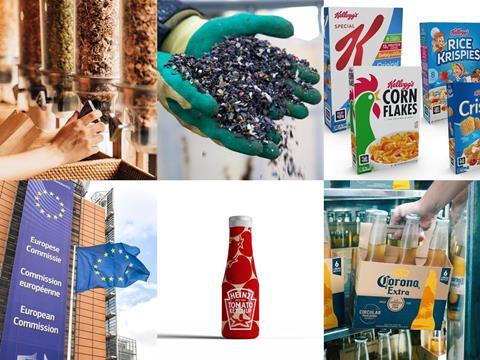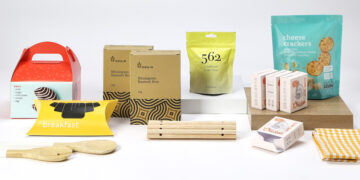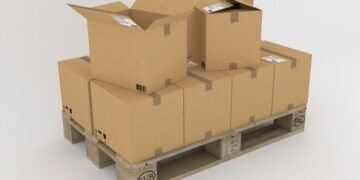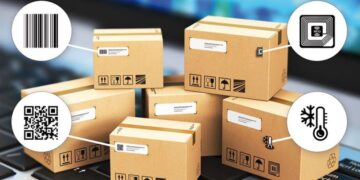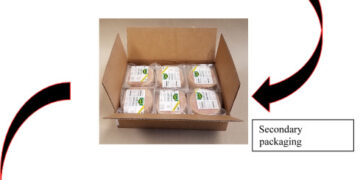Future of Packaging
Packaging is a crucial component of the product marketing mix, and it plays a vital role in protecting products, improving their shelf life, and enhancing their appeal to customers. Over the years, packaging has undergone significant changes, driven by changing consumer trends, technological advancements, and sustainability concerns. In this article, we will explore the future of packaging, including predictions for 2023 and beyond, and the key trends that are likely to shape the packaging industry over the coming years.
Sustainable Packaging
Sustainability has become a key concern for consumers, and this trend is likely to continue in the future. According to a recent survey, 74% of consumers are willing to pay more for sustainable packaging. As a result, we are likely to see an increased focus on sustainable packaging materials, including biodegradable plastics, recycled materials, and plant-based alternatives.
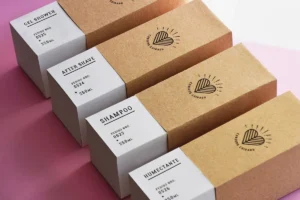
Smart Packaging
Smart packaging is a trend that is likely to gain momentum in the future. Smart packaging uses technology to improve the functionality and performance of packaging, including features such as temperature sensors, RFID tags, and QR codes. Smart packaging can help improve supply chain management, reduce waste, and enhance the customer experience.
Personalized Packaging
Personalization is a trend that is likely to continue in the future. Personalized packaging allows brands to create unique and memorable experiences for their customers by incorporating personalized messages, graphics, or other elements into the packaging design. This can help build customer loyalty and enhance the overall customer experience.
Minimalist Packaging
Minimalist packaging is a trend that is likely to gain popularity in the future. Minimalist packaging involves using simple, clean designs that focus on the essential elements of the product. Minimalist packaging can help improve the sustainability of packaging, reduce waste, and enhance the product’s appeal to customers.
Interactive Packaging
Interactive packaging is a trend that is likely to continue in the future. Interactive packaging uses technology to create an interactive experience for customers, such as augmented reality (AR) or virtual reality (VR) experiences. Interactive packaging can help enhance the customer experience and create a memorable and engaging experience for customers.
Biodegradable Plastics
Biodegradable plastics are a trend that is likely to continue in the future. Biodegradable plastics are designed to break down quickly in the environment, reducing the impact of plastic waste on the environment. Biodegradable plastics can be made from a variety of materials, including cornstarch, potato starch, and other plant-based materials.
3D Printed Packaging
3D printing is a trend that is likely to gain momentum in the future. 3D printing allows brands to create highly customized packaging designs quickly and cost-effectively. 3D printed packaging can help improve the sustainability of packaging and reduce waste by creating packaging designs that are tailored to the specific needs of the product.
Intelligent Packaging
Intelligent packaging is a trend that is likely to continue in the future. Intelligent packaging uses sensors and other technologies to monitor the condition of the product and provide real-time information to the supply chain. Intelligent packaging can help improve supply chain management, reduce waste, and enhance the customer experience.
In addition to these key trends, there are several other factors that are likely to shape the future of packaging, including:
- E-commerce Packaging
The rise of e-commerce has led to significant changes in packaging design, with brands needing to create packaging that is not only attractive but also durable enough to withstand the rigors of shipping and handling. E-commerce packaging is likely to continue to evolve in the coming years, with a focus on creating packaging that is cost-effective, sustainable, and easy to use for both customers and retailers.
- Health and Safety
The COVID-19 pandemic has highlighted the importance of health and safety in packaging design. Brands are likely to continue to prioritize health and safety in their packaging designs, with a focus on creating packaging that is hygienic, easy to clean, and free from contaminants.
- Personalization and Localization

As global markets continue to grow, brands are likely to focus on creating packaging that is tailored to the specific needs and preferences of different regions and cultures. This may involve incorporating localized messaging or graphics into the packaging design, or creating packaging designs that are specifically tailored to the tastes and preferences of different regions.
- Brand Transparency
Consumers are increasingly demanding transparency from brands, particularly when it comes to the sourcing and sustainability of packaging materials. Brands are likely to continue to focus on creating packaging that is transparent and communicates their commitment to sustainability and social responsibility.
- Packaging Innovation
With increased competition in the marketplace, brands are likely to focus on creating packaging that is innovative and stands out from the crowd. This may involve incorporating new materials, technologies, or design elements into the packaging design to create a unique and memorable experience for customers.
It is important for brands to remain agile and adaptable in the face of these changes, and to be prepared to pivot their packaging strategies as needed. This may involve investing in new technologies, materials, or design elements, or collaborating with other brands, suppliers, or stakeholders to develop innovative packaging solutions.
In addition, it is important for brands to continue to prioritize sustainability in their packaging strategies. With growing consumer demand for sustainable packaging, brands that prioritize sustainability are likely to have a competitive advantage in the marketplace. This may involve investing in biodegradable plastics, recycled materials, or other sustainable alternatives, as well as implementing more sustainable manufacturing and distribution processes.
Finally, it is important for brands to remain focused on the customer experience when developing packaging strategies. Packaging plays a critical role in shaping the customer experience, and brands that prioritize the customer experience in their packaging design are likely to build stronger relationships with their customers and improve customer loyalty.
In conclusion, the future of packaging is likely to be shaped by a range of trends and factors, including sustainability, smart packaging, personalized packaging, minimalist packaging, interactive packaging, biodegradable plastics, 3D printed packaging, intelligent packaging, e-commerce packaging, health and safety, personalization and localization, brand transparency, and packaging innovation. These trends and factors are likely to have a significant impact on the packaging industry, driving innovation, and change in the years to come. As a result, it is important for brands to stay attuned to these trends and to incorporate them into their packaging strategies to ensure they remain competitive and meet the evolving needs and preferences of their customers.

